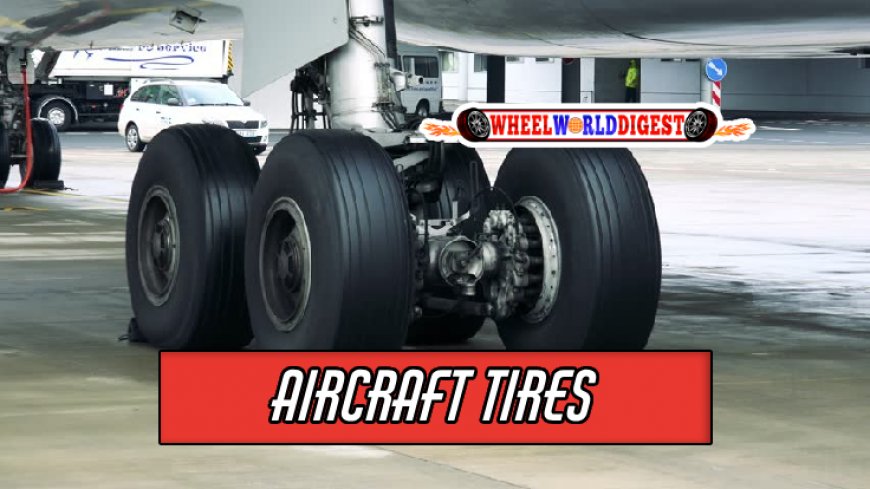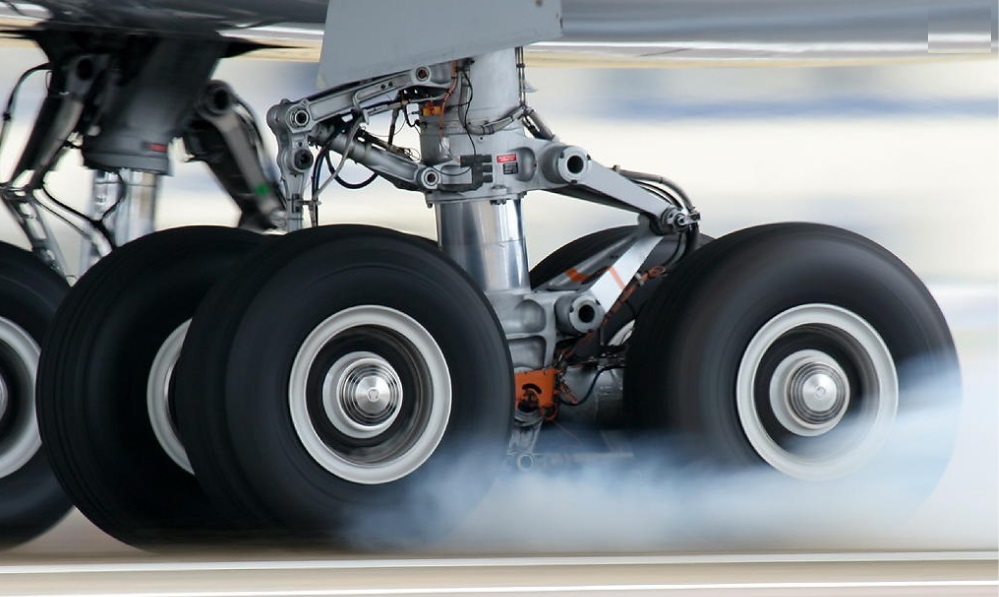Aircraft Tire Essentials Explained
Discover the critical features of aircraft tires. Our guide reveals their specialized design and why they're vital for safety.

Tire technology goes beyond what you see on road vehicles. Totem in the fascinating world of aviation, aircraft tires are at the heart. They play cardinal roles endearing themselves as unsung heroes of the aviation industry.
Unveiling the Essentials of Aircraft Tires
These heavy-duty champions shoulder incredible stress and workload. But what makes them specially adapted for their daunting task? It's time to delve into some enlightening facts and details about aircraft tires.
Table of Contents
- Aircraft Tire Design
- Materials and Components
- Maintenance and Replacements
- Aircraft Tire Safety
- Future Trends in Aircraft Tires
- Crucial Factors in Choosing Aircraft Tires
Aircraft Tire Design

When it comes to tire design, aircraft tires are quite different from the ones used in your typical road vehicle. Designed to support weights that far exceed anything on our roads, aircraft tires are a marvel of engineering.
The consistency is hard rubber, built to resist heavy impacts. In addition, the treads are minimal or non-existent to reduce the risk of aquaplaning when landing on wet runways. Despite their beefy appearance, aircraft tires are incredibly light, making them perfect for flight.
Military vs Commercial Aircraft Tires
The design considerations for aircraft tires also vary depending on the type of aircraft they are meant for. Military aircraft tires, for example, are designed to withstand extreme operating conditions such as short runways, high-speed landings, and rough terrains. On the other hand, commercial aircraft tires are engineered for longevity, carrying heavy loads on long haul flights.
Materials and Components
Aircraft tires are more than just simple rubber. They are an intricate composition of various high-quality components, each playing a specific role in ensuring the tire’s peak performance.
- Rubber: Natural and synthetic rubber mixtures are the main component. They provide shock absorption as well as ensure a steady grip of the runway surface.
- Nylon: Strong yet flexible, nylon cords are woven into the rubber, reinforcing the tire structure and enhancing its durability and resistance to wear.
- Steel: Used for the bead wire, it secures the tire to the wheel rim and maintains the tire’s circular shape under high stress.
Moreover, the internal liner is composed of a specialized compound that maintains the tire's pressurization, and the tread cap, usually a tough carbon-black rubber layer, provides optimal wear resistance.
Maintenance and Replacements

Maintaining aircraft tires in top-shape is a critical part of aircraft maintenance—it's a matter of safety. Regular inspections are conducted for wear, damage, and essentially to ensure that the tires can withstand the tremendous rigors of takeoffs, landings, and taxiing on the runway.
Even with their impressive resilience, aircraft tires do wear out eventually. Changing these tires isn't as frequent as you'd imagine. On average, main tires on a commercial jet need replacement every 250-300 landings, depending on factors like aircraft type, runway condition, and landing weights. Piqued already? Yes, aircraft tires are built to last!
Retreading: A Sustainability Effort
One fascinating aspect in this department is the process of retreading. Unlike the tires on your car, aircraft tires can be retreaded several times to extend their service life and reduce environmental impact. This process involves removing the worn tread and applying a new one, affording the tire a new lease of life.
Retreading has become a standard practice in the aviation industry, championing sustainability by reducing the need for new materials and energy.
Aircraft Tire Safety
Safety is paramount in the aviation industry, and tires are no exemption. Intriguingly, aircraft tires must weather extreme temperatures, from the freezing altitudes to the heat generated during landing. Their inflation pressure is, as such, significantly higher compared to automobile tires. High-pressure tires are robust and capable of withstanding possessionary challenges during flights.
Despite the high inflation, aircraft tires, by design, don’t burst when the plane touches down. The secret? The retracted wheels spin up to the landing speed before they hit the runway. This avoids the sharp, sudden strain on tires, contributing to their longer lifespan.
Let's not forget that tire blowouts can and do happen, primarily due to FOD (Foreign Object Damage). Jet mechanics routinely check for these hazards to ensure smooth and safe rides.
Future Trends in Aircraft Tires

Innovation is the key for aviation, and aircraft tires are at the forefront of these changes. With sustained efforts towards greener and safer skies, future trends promise tires of greater endurance, environmental sustainability, and load capacity.
Eco-friendly Aircraft Tires
In the journey towards more sustainable aviation, the birth of eco-friendly tires is imminent. The tire industry is exploring alternative sustainable materials such as bio-sourced rubber, that can reduce the carbon footprint. Equally, new manufacturing techniques and processes are in view to promote greater recycling and reuse of worn-out tires.
Crucial Factors in Choosing Aircraft Tires
- Quality: A top-line factor when it comes to aircraft tires. Lower quality could mean frequent replacements, posing a significant safety risk.
- Durability: Aviation demands durability. Tires should withstand harsh conditions and exhibit longer service life.
- Traction: Good traction ensures excellent stability. The grip of the tire on wet and dry runways is essential for safe landing and take-off.
- Pressure capability: Aircraft tires should have the capacity to hold high pressures without complications.
- Cost: Cost-efficiency is essential. With frequent replacements and retreading, the aircraft tire's life-cycle costs should justify the initial investment.
No doubt, choosing the right aircraft tires is a blend of various factors. They work hand-in-hand to contribute to an efficient, safe, and cost-effective aviation experience.
In a nutshell, aircraft tires are phenomenal pieces of engineering that deserve our utmost respect. They carry the immense responsibility of ensuring a safe journey for millions of air travelers. Now that we’ve unraveled the secrets of aircraft tires, it is easy to appreciate their monumental contribution to aviation safety and efficiency. So the next time you’re enjoying a flight, remember to spare a thought for the tireless workers beneath you – the magnificent aircraft tires!
What's Your Reaction?









































































